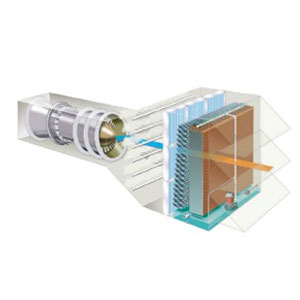
Resources
- Home
- About Air Cooling Systems
- Air Conditioner Pre Cooling System
- Air Cooling System
- Air Cooling System Design
- Air Cooling System In Automobiles
- Air Cooling System Reviews
- Air Cooling Systems FAQs
- Air Cooling Systems For Homes
- Air Cooling Systems For Offices
- Air In Cooling System Symptoms
- Car air Cooling System
- Car Air Cooling System
- Compressed Air Cooling System
- Cooling Air System
- Engine Air Cooling System
- Forced Air Cooling System
- Forced Air Heating And Cooling System
- Gas Turbine Inlet Air Cooling System
- How Do Air Cooling Systems Work
- Simple Air Cooling System
- Types Of Air Cooling Systems
- Underground Air Cooling System
- Where To Buy An Air Cooling System
Gas Turbine Inlet Air Cooling System
A gas turbine inlet air cooling system(GTIAC system) is used for plants located in areas with high ambient temperature. When hot weather peaks, the power demands increase as well. These systems work by cooling the ambient air before it goes into the compressor. Since cooler air becomes more dense, gas turbines with an inlet air cooling increases the turbine output efficiency and power because of a higher pressure ratio and mass flow rate.
GTIAC systems, which are used in hundreds of plants around the world, provide several technologies such as fogging, evaporative cooling, water-cooled chillers, air-cooled chillers, absorption chillers, thermal storages equipped with chillers, and other combined technologies.
GTIAC Environmental Benefits
A gas turbine inlet air cooling systemreduces the carbon footprint caused by power production in plants because there is less or no need for siting new power plants. Aside from reducing emissions of greenhouse gas (carbon dioxide), it also minimizes emissions of NOx(nitric oxide and nitrogen dioxide), SOx (Sulfur oxide) and other pollutants.
Using GTIAC systems in power plants help these plants in producing more electric energy even on hot days that require higher fuel consumption. It stabilizes power production regardless of ambient weather conditions. When a turbine inlet cooling system is combined with thermal energy storage, it helps make extra electric energy for peak periods.
Economic Benefits of Gas Turbine Inlet Air Cooling System
- Quicker and Higher ROI– Compared to other technologies, GTIAC systems has a faster capital cost payback due to its total blended capacity cost and lower capital cost per MW capacity gained produced.
- Lower costs – Not only will the company behind the power plants earn more revenue due to the improvement of fuel consumption to power-output ratio, the electricity users would also enjoy lower ratepayer rates.
- Simple to operate – No need to hire additional engineers to operate a gas turbine inlet air cooling system. In addition, it can be fully integrated into an existing DCS system.
- Less or No Treated Water needed – Most GTIAC systems require less de-ionized water, de-mineralized water or other treated water. Some even require no treated water at all.
- Low Maintenance – Most companies that manufacturea gas turbine inlet air cooling system and its hybrids offer free maintenance for life. These systems are often made with industrial-grade components and high quality stainless steel.
GTIAC Systems vs. Other Technologies
The best thing about a gas turbine inlet air cooling system is that it can capture lost or hidden capacity when most needed and most valuable. As such, it reduces the need to install or build new plants just to meet the demands during hot weather. However, comparing this technology to others can be tricky because although most studies refer to a given set of temperatures, dozens of factors are involved in calculating if a GTIAC system is more economically attractive than other technologies. In fact, companies must record hourly weather data for an entire year, daily cost of fuel, daily power demand and produced power’s market value just to estimate the system’s viability.
